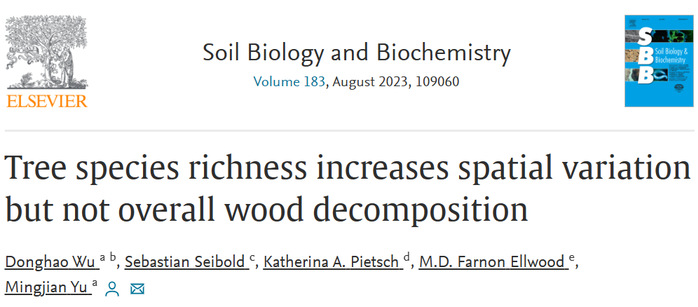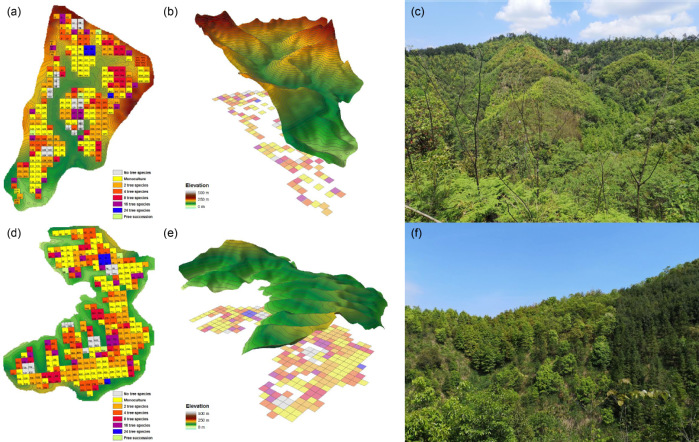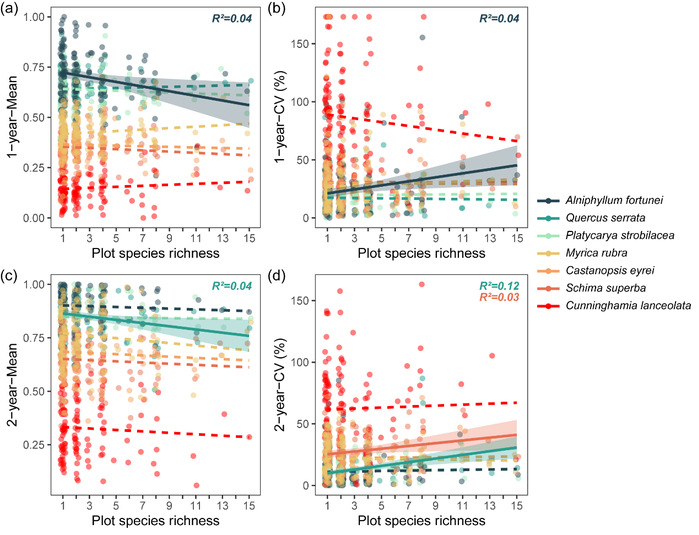
Title: Tree species richness increases spatial variation but not overall wood decomposition
Donghao Wu, Sebastian Seibold, Katherina A. Pietsch, M.D. Farnon Ellwood, Mingjian Yu
Abstract
Empirical evidence for the positive relationship between tree species richness and wood decomposition is weak, despite the greater numbers of decomposers in diverse stands. Tree species identity affects decomposition rates strongly by altering soil communities and micro-environments. It is therefore likely that tree species richness influences spatial variation rather than the mean rate of decomposition. We used a neighbourhood approach to test this hypothesis by quantifying decomposition rates and decomposer activities within deadwood, whilst measuring the surrounding micro-environments.
Using the BEF-China experimental platform, we placed three fine branches from seven tree species across richness gradients for one and two years. As expected, plot species richness increased the spatial variation of wood decomposition of three species but decreased the mean rate of wood decomposition of two species. Neighbourhood trees altered wood decomposition in two ways. First, increasing amounts of leaf tannins reduced termite activities and the number of fungal fruitbodies. Second, higher species richness increased tree volumes and thus cooled the understory, which reduced the occurrence and feeding intensity of ectothermic termites. Neighbourhood species richness showed positive effects on decomposer activities (i.e. termite occurrence, fruitbody number and mycelium cover) after two years, probably by weakening resource limitation of deadwood biomass and increasing the stages of decay. Neighbourhood metrics had comparable (after 1 year) and even stronger effects (after 2 years) on decomposer activities than wood traits. Our study reveals that tree species richness promotes spatial variation in wood decomposition rates by enhancing environmental heterogeneity. Our results explain how young regenerating species-rich forests, where termites are the dominant decomposers, can maintain deadwood stocks and decomposer activities over relatively longer time spans.
Link: https://doi.org/10.1016/j.soilbio.2023.109060







